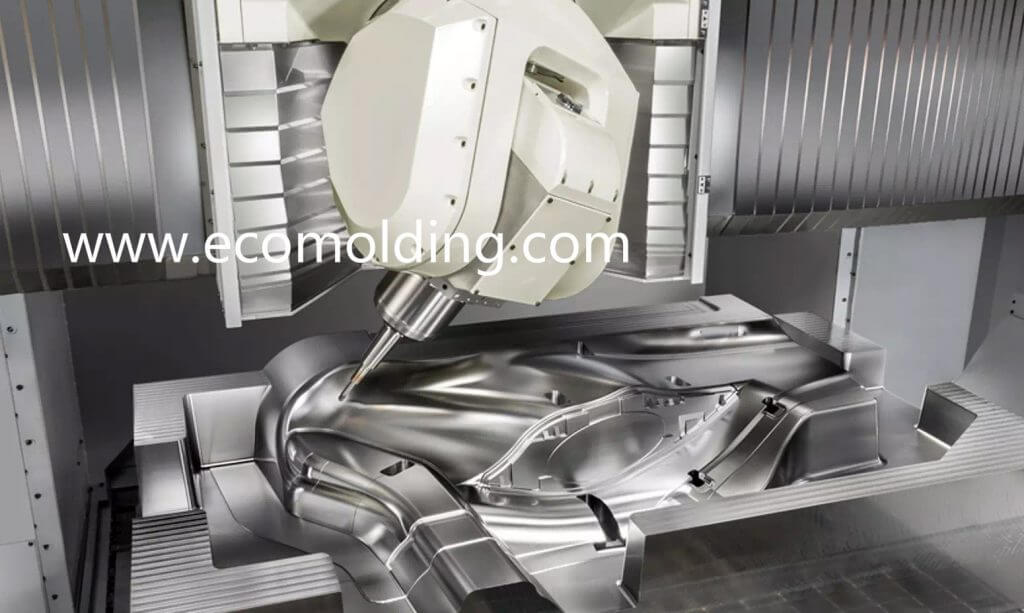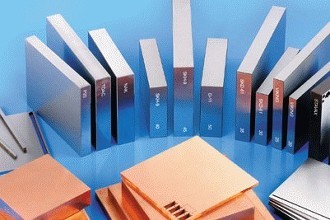
P20 Mold steel
Overview:The P20 Mold Steel is a type of mold welding consumable, and the earliest is P20, followed by P20H and P20Ni. The P20 Steel is applicable to the production of molds for plastic materials, as well as those for diecasting low melting point metals. This steel material features great machinability, as well as mirror polishing properties.
Chemical composition:
| Element | C | Si | Mn | Mo | Cr | Ni |
| (%) | 0.28~0.40 | 0.20~0.80 | 0.60~1.00 | 0.30~0.55 | 1.40~2.00 | 0.80~1.20 |
How to Use: The P20 Steel is pre-hardened to 285-330HB (30-36HRC), which is equivalent to 618 of Sweden and GS-2311 of Germany. It can be directly used for molding, and boasts a great dimensional stability. Pre-hardened steel is able to meet the requirements for general applications, with a mold service life of up to 500,000 cycles.
Characteristics:
- The vacuum degassing process ensures the purity of the steel, making it suitable for plastic molds that require polishing or etching treatment.
- Supplied as a pre-hardened steel, able to be directly used for mold manufacturing without having to be heated, thus reducing the production cycle.
- After forging and rolling, the structure is dense, and no pores or pinholes are found according to 100% ultrasonic inspection.
Purposes:
- Injection molds, and extrusion dies for thermoplastics
- Blow molds for thermoplastics
- Main parts for heavy duty molds
- Parts for cold insulation structure
- Commonly used in the production of TV casings, inner shell of washing machine / refrigerator, and buckets, etc.
718 Steel
Overview
The 718 Mold Steel, known as 3Cr2NiMo in China, is an enhanced steel on the basis of P20 (3Cr2Mo). The quality of the steel material has been so greatly improved that it is able to compensate for the weaknesses of the P20 Mold Steel, and at the same time meet the requirements that are beyond P20. Among today’s mold steel materials in China, there is also P20+Ni, in addition to the above-mentioned Chinese standard steel grades. The 718 and 718H (ASSAB) from Sweden; the PX5/PX4 (DAIDO Special Steel, Japan); the GS-711, GS-738, GS-312 and GS-318 (Thyssen, Germany); and the M238 ECOPLUS (BOHLER) from Austria are the most widely used general-purpose mold steel grades for molding plastic materials. It is often referred to as an “advanced” plastic mold steel that always serves as a benchmark for newly developed mold steels.
Purposes
The purpose of the 718 Mold Steel is the same as that of the P20 Mold Steel, but by virtue of its better hardenability and superior performance, it is able to be used for production of the forming parts of large-sized and high-end plastic molds.
- Injection molds, and extrusion dies for thermoplastics
- Blow molds for thermoplastics
- Main parts for heavy duty molds
- Parts for cold insulation structure
- Commonly used in the production of TV casings, inner shell of washing machine / refrigerator, and buckets, etc.
- The vacuum degassing process ensures the purity of the steel, making it suitable for plastic molds that require polishing or etching treatment.
- Supplied as a pre-hardened steel, able to be directly used for mold manufacturing without having to be heated, thus reducing the production cycle.
- After forging and rolling, the structure is dense, and no pores or pinholes are found according to 100% ultrasonic inspection.
Chemical composition
| Element | C | Si | Mn | Mo | Cr | Ni |
| (%) | 0.28~0.40 | 0.20~0.80 | 0.60~1.00 | 0.30~0.55 | 1.40~2.00 | 0.80~1.20 |
Hardening
In order to improve the mold service life to more than 800,000 molding cycles, the pre-hardened steel can be further hardened by quenching and low temperature tempering. Before quenching, pre-heat the steel under 500-600°C temperature conditions for 2-4 hours, then keep the temperature at 850-880°C for a certain period of time (at least 2 hours), oil-cool it to 50-100°C, followed by air cooling, and the hardness can reach up to 50-52HRC after quenching. To prevent cracking, immediately perform low-temperature tempering at 200 °C, after which, the hardness can be kept over 48HRC.
Nitriding
Nitriding helps obtain a high-hardness surface structure, after which, the surface hardness can reach up to 650-700HV (57-60HRC), and the service life of the mold is able to exceed 1 million cycles. The nitrided layer features a compact structure and smoothness, with improved ejection performance, as well as resistance to moisture and alkaline solutions.
Steel H13
Overview

H13 is a hot work steel, and the grade is 4Cr5MoSiV1; an alloy tool steel is formed by adding alloying elements on the basis of the carbon steel. Among them, the alloy tool steels include: measuring and cutting tool steels, steel for impact resistant tools, cold work mold steel, hot work mold metal, non-magnetic mold steels, and plastic mold steels.
Chemical composition
| Element | C | Si | Mn | Cr | Mo | V | P | S |
| (%) | 0.32~0.45 | 0.80~1.20 | 0.20~0.50 | 4.75~5.50 | 1.10~1.75 | 0.80~1.20 | ≤0.030 | ≤0.03 |
Heating
After heat treatment, the top hardness of the H13 mold Steel reaches up to HRC52. When the minimum size of a part is greater than 300mm, the hardness after heating should be kept within HRC50.
Characteristics
As an electroslag heavy-duty steel, it boasts high hardenability and thermal crack resistance. The steel contains a high content of carbon and vanadium, allowing it to have a great wear resistance, but a relatively weaker toughness. Other features include great heat resistance, outstanding strength and hardness at high temperatures, as well as high wear resistance and toughness, excellent mechanical properties and high resistance to tempering.
Other designations that are equivalent to H13 Mold steels include:
- AFNOR Z 40 COV 5
- DIN 1.2344
- UNI KU
- JIS SKD61
- SS 2242
- B.S. BH 13
- ASTM A681
- FED QQ-T-570
- SAE J437
- SAE J438
- SAE J467
- UNS T20813
- AMS 6408
Purposes
It is used for the production of forging dies with a high impact load, hot extrusion dies, precision forging dies; as well as die-casting molds for aluminum, copper and their alloys.
